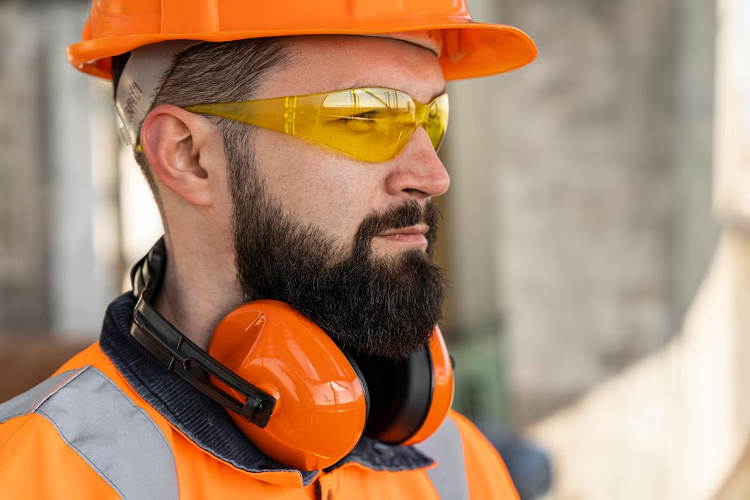The gift of sight is a priceless one since it enables us to take in the splendor of the world around us. On the other hand, they are extremely susceptible to a wide variety of risks, whether they are on the job or participating in leisure activities. It is impossible to exaggerate the value of eye protection equipment since it acts as a shield against potential injuries that could lead to irreversible damage.
This blog dives into the relevance of eye protection equipment, its many forms, and the significance of adopting it into our daily lives. Specifically, the blog focuses on the value of incorporating eye protection gear into our daily lives.

The Vital Role of Eye Protection Equipment
The purpose of eye protection equipment is to shield our eyes from a broad variety of threats, such as flying debris, dangerous chemicals, harsh light, and radiation.
It does not matter if you are working on a construction site, doing do-it-yourself projects at home, or taking part in sports and recreational activities; it is imperative that you wear appropriate eye protection gear in order to avoid accidents and preserve your eyesight to its fullest potential.
Types of Eye Protection Equipment
1. Safety Glasses
One of the most widespread forms of eye protection gear is the ubiquitous pair of safety glasses. They are available in a variety of designs and can be outfitted with side shields to provide an additional layer of defense.
When dealing with wood and metal, as well as when performing regular construction chores, safety glasses are an absolute must.
2. Safetry Goggles
Goggles provide enhanced eye protection by forming a watertight barrier around the wearer’s eyes. This shields the eyes from a variety of hazards, including dust, liquids, and chemicals. They are frequently utilized in the settings of laboratories, medical facilities, and chemical manufacturing companies.
3. Face Shields
Face shields provide full-face protection and are often used in conjunction with safety glasses or goggles. They are particularly useful in situations where there is a risk of splashes or large debris, such as in welding or woodworking.
4. Welding Helmets
Specifically designed for welding tasks, these helmets protect against intense light, sparks, and flying metal particles. They feature a dark tint to shield the eyes during welding processes.
5. Sunglasses
While often seen as a fashion accessory, sunglasses with proper UV protection are essential for shielding the eyes from harmful ultraviolet rays. Prolonged exposure to UV rays can lead to serious eye conditions, including cataracts and macular degeneration.
Workplace Eye Safety
There is an ongoing danger of injury to the eyes in many different lines of work. Both employers and employees have a duty to ensure that suitable eye protection equipment is available and worn at all times when it is required to do so.
Employers have a responsibility to their workers to do routine risk assessments, supply appropriate eye protection equipment, and educate workers on how to use it properly.
In addition to this, personnel have a responsibility to diligently use eye protection and report any concerns they may have regarding workplace risks or equipment.
Eye Protection in Sports and Recreation
Eye protection should not be limited to the workplace alone. Engaging in sports and recreational activities without adequate eye protection can lead to severe eye injuries.
Sports such as basketball, racquetball, and hockey involve high-speed projectiles and collisions that can cause permanent damage to the eyes. Wearing appropriate goggles or protective eyewear can significantly reduce the risk of injury in such activities.
Eye Protection for Children
Children, in particular, are more likely to get eye injuries as a result of their natural curiosity and lack of experience. When engaging in potentially hazardous activities such as sports, creating, or playing with toys that could cause eye injuries, it is essential for parents and other caregivers to promote eye safety and ensure that children wear protective eyewear.
Buying the Right Eye Protection Equipment
Purchasing the right eye protection equipment involves considering the specific hazards involved in a task or activity. Some key factors to consider when choosing eye protection gear include:
- Impact resistance: The eyewear should meet the ANSI Z87.1 standard for impact resistance.
- UV protection: For outdoor activities, choose sunglasses that offer 100% UV protection.
- Fit and comfort: Proper fit ensures maximum protection and comfort, encouraging consistent usage.
- Anti-fog and anti-scratch coatings: These features enhance visibility and the longevity of the eyewear.
- Lens tint: Different tints can enhance vision in specific environments, such as polarized lenses for reducing glare during water sports.
Conclusion
Eye protection gear is an essential component in the overall preservation of our vision across a variety of contexts and activities in life.
Protecting our eyes should be a top consideration while we are engaging in any kind of activity, whether we are at work, playing sports, or participating in recreational pursuits.
We may prevent innumerable eye injuries and ensure the continuous health of our eyesight for years to come if we take precautions such as using the appropriate eye protection gear and educating both ourselves and others about the need of maintaining eye safety. Keep in mind that “an ounce of prevention is worth a pound of cure” and make the investment in eye protection now for a better and more secure tomorrow.


